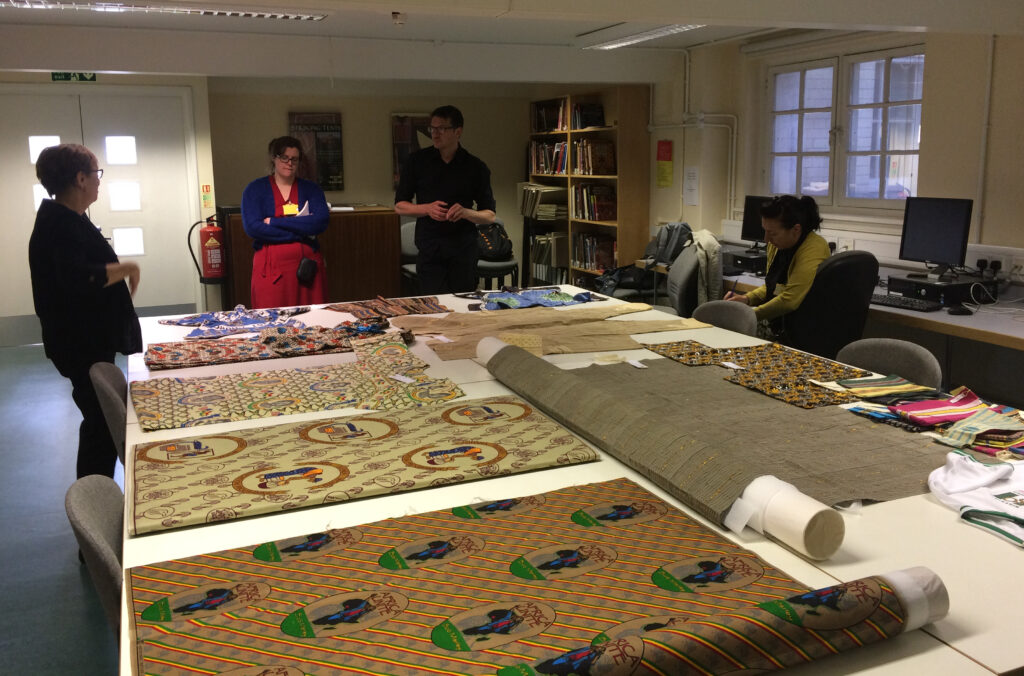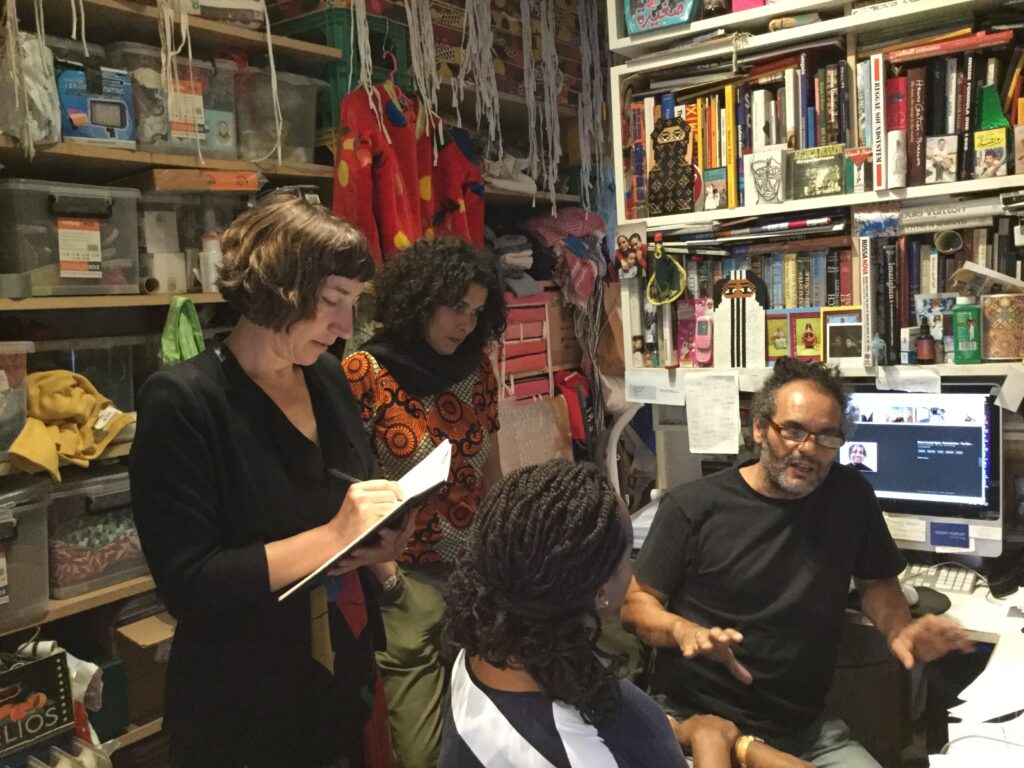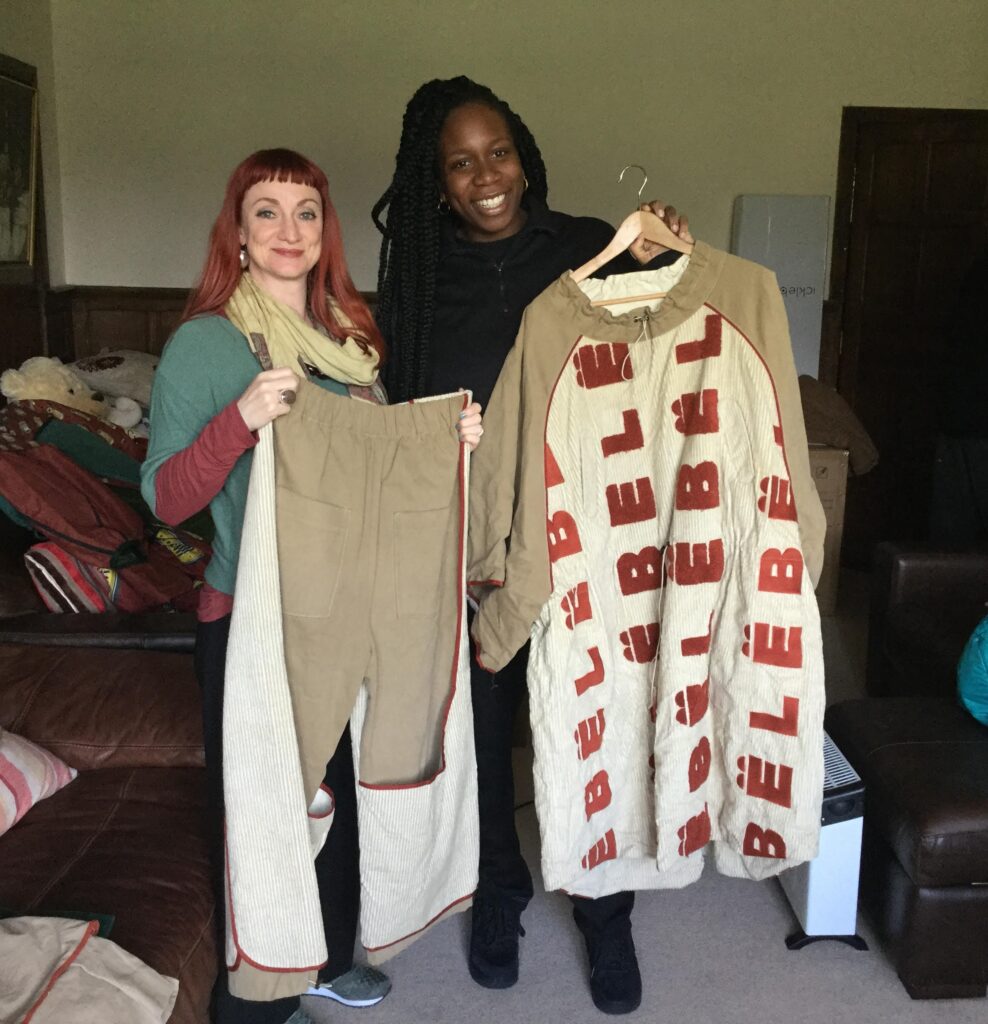Brighton Museum staff and Collecting Panel members carried out extensive research over the course of the Fashioning Africa project, involving many trips, meetings and activities. Research activities included exploring how post-colonial African fashion was represented in other museums and museum collections through visits to museums in the UK and Europe. Collecting Panel meetings formed an important aspect of the research stage, where information was shared, and knowledge gathered. The Collecting Panel put together a ‘wish list’ so that museum staff could move onto sourcing the objects and stories.

Research trips included visiting commercial dealers, galleries and organisations such as Autograph ABP, artists such as Hassan Hajjaj, and markets and art fairs, such as African 1:54 in London. Classic flat textiles, photography and art pieces were mainly sourced via these new contacts. As well as researching and sourcing objects in the UK, collecting panel members and other supporters researched and acquired objects for the new collection on the museum’s behalf whilst working and visiting family in Kenya, Nigeria, South Africa and Zimbabwe. World art curator, Rachel Heminway Hurst and collecting panel member Nicola Stylianou received additional funding through an Art Fund Jonathan Ruffer curatorial grant to travel to Ghana to carry out research and acquire well-provenanced garments and textiles.

Understanding the market was a key aspect of project research. We soon realised that there was a lack of post-1960 African textiles and garments with detailed provenance information available on the open market, and that we needed to build relationships within communities to source these. This was essential in order to build a coherent collection based on cultural and personal significance. The lack of an established, commercial market meant there was no price guide to reference when making purchases from individuals. Advice from the Collecting Panel members enabled the museum to establish acceptable prices that owners felt reflected true value. The Panel members understood the personal and cultural significance of these outfits and recognised the need to ensure their future preservation. They also recognised the museum’s responsibility in setting a precedent for collecting in this area, and the need to establish a fair market. With their guidance and support the museum was able to acquire a wide range of objects and stories.
